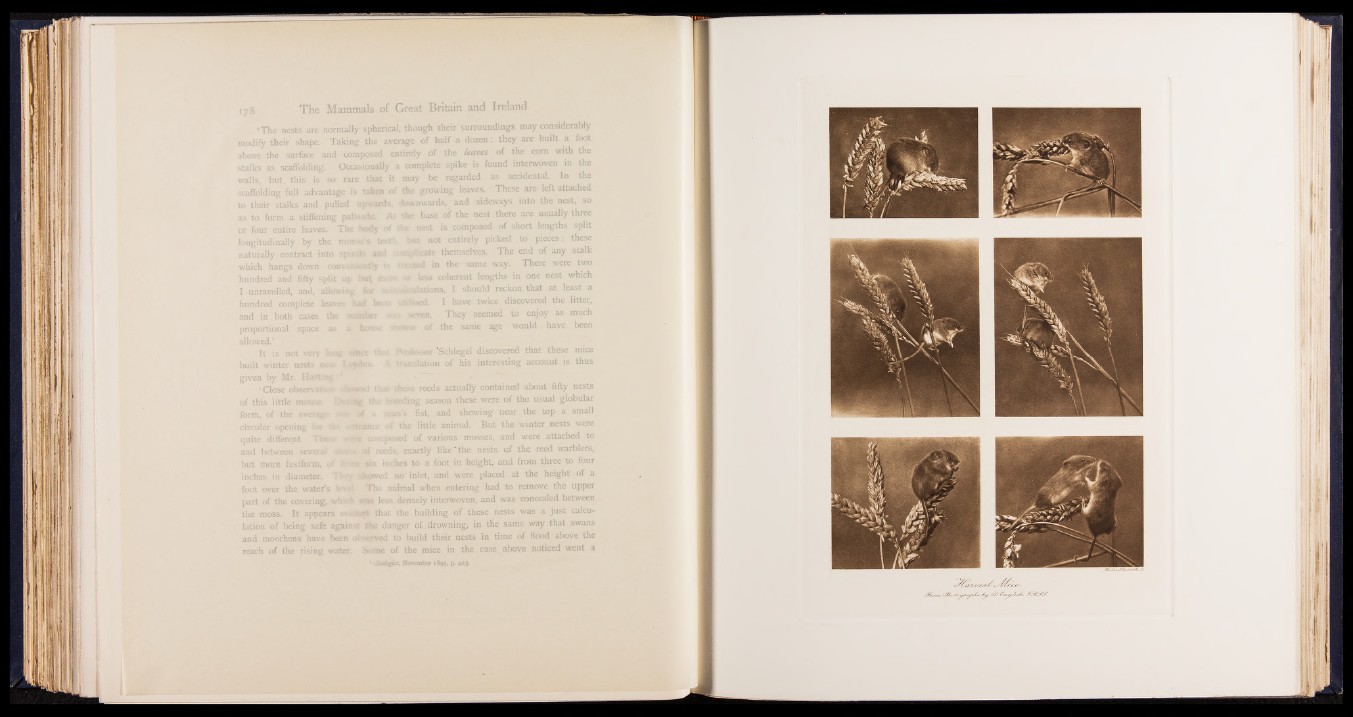
•The nests are normally spherical, though their surroundings may considerably
modify their shape. Taking the average of half a dozen: they are built a foot
above the surface and composed entirely of the leaves of the com with the
stalks as scaffolding. Occasionally a complete spike is found interwoven in the
wails, but. this is so rare that it
scaffolding full advantage i:
to their stalks and pulled
as to form a stiffening pal
of four entire leaves. The
longitudinally by the moi
naturally contract into spir
which hangs down conven
hundred and fifty split up
I unravelled, and, allowing
hundred complete leaves 1
and in both cases the m
proportional space as a
allowed.’
It is not very long si
built winter nests ne«; Le^
given by Mr. Harting :
‘ Close observation shot
of this little mouse Dare
form, of the average s&m-
circular opening for the
quite different. These •-•-■-
and between several
but more fusiform, of
inches in diameter. Ytegy
foot over the water’s ku-.v.
part of the covering, which
the moss. It appears evn
lation of being safe again:
and moorhens have been <
reach of the rising water.
taken c
upwards
may be regarded as accidental. In the
the growing leaves. ' These are left attached
downwards, and sideways into the nest, so
the base of the nest there are usually three
the nest is composed of short lengths split
but not entirely picked to pieces: these
implicate themselves. The end of any stalk
treated in the same way. There were two
or less coherent lengths in one nest which
v’kulations, I should reckon that at least a
utilised. I have twice discovered the litter,
s seven. They seemed to enjoy as much
©use of the same age would have been
Professor ‘Schlegel discovered that these mice
translation of his interesting account is thus
«d that these reeds actually contained about fifty nests
g the breeding season these were of the usual globular
if a man’s fist, and showing near the top a small
ranee of the little animal. But the winter nests were
B composed of various mosses, and were attached to
of reeds, exactly like * the nests of the reed warblers,
t six inches to a foot in height, and from three to four
showed no'inlet, and were placed at the height of a
The animal when entering had to remove the upper
was less densely interwoven, and was concealed between
; i“ t that the. building of these nests was a just calcu-
- tbe danger of. drowning, in the same way that swans
bserved to build their nests in time of flood above the
Some of the mice in the case above noticed went a
iber 1895, p. 423.